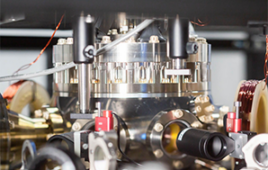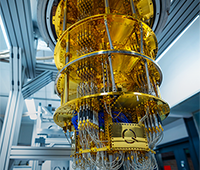Changes to verification of performance of operations by a second individual
 |
The FDA’s GMP regulations have been unchanged for three decades. Although there have been proposed amendments (the last in 1996), none have been formalized into law.
Take One: Direct final rule published
In December 2007, the FDA published a direct final rule for changes to 21 CFR 211 (cGMP for finished pharmaceutical products) in four specific areas.1 The use of a direct final rule, in effect publishing the rule without a public consultation period, was unusual. However, the agency anticipated little feedback or opposition to the changes.
Take Two: Direct final rule withdrawn
The changes were due to go into effect in mid-April 2008. However, in early April, the FDA announced that it was withdrawing the regulation due to opposition from industry and other interested parties. All of the proposed changes were adversely commented upon and the responses can be seen on the Web.2
Take Three: Final GMP amendments published
However, in September, the final version with the GMP amendments was published, and the regulation changes are effective from December 8, 2008. The FDA used the comments submitted to the earlier direct final rule as the public consultation process.3 In essence, the changes originally proposed involved water purity, aseptic processing, verification of performance of operations by a second individual, and the use of asbestos filters. Water purity did not get into the September release due to the adverse comments. However, water supply and plumbing will be addressed later in the FDA’s GMP revision when they consider water as a drug product ingredient. The main regulatory changes from this paper’s perspective concern the use of a verification of performance of operations by a second individual.
Verification by a second individual
The four eyes principle is a cornerstone of any quality system — GMP, Good Laboratory Practice (GLP) or International Organization for Standardization (ISO) 17025. A first person performs a task, and then a second person checks it. In U.S. GMP, there are several references to a second-person check or verification, such as QC analysis for the laboratory (§211.194). These second-person checks are all key stages of the pharmaceutical manufacturing process. They are to ensure that mistakes can be caught and resolved early in the process. Although this is primarily to ensure patient safety and compliance with the regulations, it is also good business sense as well, since you don’t want to commit resources to a process that will fail.
The 1978 GMP regulations included §211.684 that outlined the controls required for automated equipment, including computerized systems, that can be used during the manufacture and testing of a drug product. In essence, the controls were to assure
• proper system performance
• changes to records are made only by authorized personnel
• inputs and outputs are checked for accuracy
• data are backed up in an appropriate way to protect the electronic records generated
A question that has been asked of the FDA several times since the publication of the regulation concerns the need for a second (additional) person check when an automated operation is being performed. Remember that the computerized system will have been validated for the tasks that are automated (validation for intended purpose). Therefore, two individuals to check results generated automatically would appear excessive. In the preamble to the 1978 GMP regulations, there is a comment by the FDA that, if the second individual verifies that the automated system is working properly,4 the regulation can be interpreted as the first individual is replaced by a computerized system or other automated process, and only one person is necessary to verify that the automated system is functioning as intended.
So, the main change proposed was the addition of a new clause, 211.68(c), and this is the main change around second-person verification as follows:
§211.68 (c) Such automated equipment used for performance of operations addressed by §§211.101(c) or (d), 211.103, 211.182, or 211.188(b)(11) can satisfy the requirements included in those sections relating to the performance of an operation by one person and checking by another person if such equipment is used in conformity with this section, and one person checks that the equipment properly performed the operation.5
What about the analytical laboratory?
However, the main changes impacted only manufacturing sections of GMP and did not include the laboratory under 21 CFR 211.194. In the September issue of the regulations5, three of the comments to the agency requested the extension of the automated check to laboratory data. However, the FDA declined to extend the changes to the laboratory for the following reason:
We acknowledge that automated equipment may be used to conduct certain laboratory testing operations. However, when automated equipment is used to perform a laboratory test, typically a person initiates the test and ensures that the correct equipment is used and that it operates properly. In this situation, one person assists in or oversees the performance of the laboratory test and a second person reviews the records for accuracy, completeness, and compliance with established standards. Thus, the use of equipment to perform laboratory tests, though permissible, is not a situation in which automated equipment (rather than a person) performs an operation and a person verifies that performance, which is the situation addressed in revised §211.68(c). Therefore, it would not be appropriate to include a reference to §211.194 (or to §211.194(a)(8) specifically) in revised §211.68(c).
So, there you have it, the main issue is that laboratory data are interpreted and are not fixed like manufacturing data (e.g. pressure, flow and temperature measurements). Therefore, you cannot have automatic approval when human intervention is necessary to interpret and check the data.
References
1. Federal Register, 72, 68064 (2007)
2. Federal Register, 73, 18440 (2008)
3. www.regulations.gov/search/index.jsp, search under 2007N-0280 to find the docket content for the various comments and objections.
4. Federal Register, 43, 45013 (1978)
5. Federal Register, 73, 51919 (2008)
R.D. McDowall is Principal, McDowall Consulting. He may be contacted at [email protected].
Acronyms
AIQ Analytical Instrument Qualification | CFR Code of Federal Regulations | CSV Computer System Validation | EMEA European Medicine Evaluation Agency | EU European Union | FDA U.S. Food and Drug Administration | GAMP Good Automated Manufacturing Practice | GLP Good Laboratory Practice | GMP Good Manufacturing Practice | ISMS Information Security Management System | ISO International Organization for Standardization | USP United States Pharmacopeia



